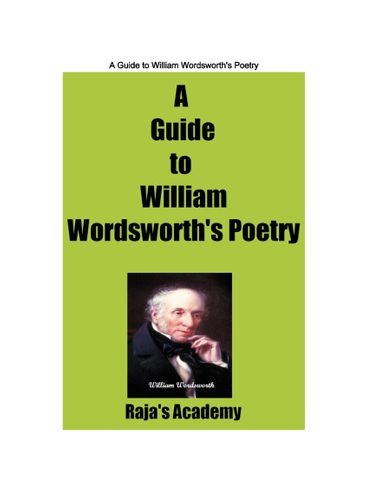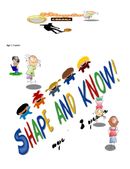You can access the distribution details by navigating to My pre-printed books > Distribution
A Guide to William Wordsworth's Poetry (eBook)
Description
On the vast and enchanting horizon of English literature, William Wordsworth shines like a star whose twinkle and shine surpass any other in the vicinity. Poets like him compel readers to admire their poetic ability. Wordsworth’s monumental poetic legacy rests on a large number of important poems, varying in length and weight from the short, simple lyrics of the 1790s to the vast expanses of The Prelude, thirteen books long in its 1808 edition.
The themes that he handled so skillfully have always been consistent throughout Wordsworth’s canon, adhering largely to the tenets that Wordsworth set out for himself in the 1802 preface to Lyrical Ballads. Here, Wordsworth argues that poetry should be written in the natural language of common speech rather than in the lofty and elaborate dictions that were then considered "poetic." He argues that poetry should offer access to the emotions contained in memory. And he argues that the first principle of poetry should be pleasure, that the chief duty of poetry is to provide pleasure through a rhythmic and beautiful expression of feeling—for all human sympathy, he claims, is based on a subtle pleasure principle that is "the naked and native dignity of man."
Wordsworth believed that poetry should be written in a common man’s language, and as a result, he refrained from any kind of affectation in his writing. Wordsworth’s style remains plain-spoken and easy to understand even today, though the rhythms and idioms of common English have changed from those of the early nineteenth century. Many of Wordsworth’s poems (including masterpieces such as "Tintern Abbey" and the "Intimations of Immortality" ode) deal with the subjects of childhood and the memory of childhood in the mind of the adult; in particular, childhood’s lost connection with nature, which can be preserved only in memory. Wordsworth’s images and metaphors mix natural scenery, religious symbolism (as in the sonnet "It is a beauteous evening, calm and free," in which the evening is described as being "quiet as a nun"), and the relics of the poet’s rustic childhood—cottages, hedgerows, orchards, and other places where humanity intersects gently and easily with nature.
Wordsworth’s poems initiated the Romantic era by emphasizing feeling, instinct, and pleasure above formality and mannerism. More than any poet before him, Wordsworth gave expression to inchoate human emotion; his lyric "Strange fits of passion have I known," in which the speaker describes an inexplicable fantasy he once had that his lover was dead, could not have been written by any previous poet. Curiously, for a poet whose work points so directly toward the future, many of Wordsworth’s important works are preoccupied with the lost glory of the past—not only of the lost dreams of childhood but also of the historical past, as in the powerful sonnet "London, 1802," in which the speaker exhorts the spirit of the centuries-dead poet John Milton to teach the modern world a better way to live.
A Guide to William Wordsworth's Poetry
Table of Content
Chapter 1
William Wordsworth
Chapter 2
Wordsworth’s Poetry
Chapter 3
Major Themes
Chapter 4
Motifs
Chapter 5
Symbols
Chapter 6
Summary & Analysis Poem “Tintern Abbey”
Summary
Poetic form
Analysis
Chapter 7
Summary & Analysis Poem “Strange Fits of Passion have I Known”
Summary
Poetic Form
Analysis
Chapter 8
Summary & Analysis Poem “Ode: Imitations of Immortality
Summary
Poetic Form
Analysis
Chapter 9
Summary & Analysis Poem “The World is Too Much with Us”
Summary
Poetic Form
Analysis
Chapter 10
Summary & Analysis Poem “It is a Beauteous Evening Calm and Free
Summary
Poetic Form
Analysis
Chapter 11
Summary & Analysis Poem j “London, 1802”
Summary
Poetic Form
Analysis
Chapter 12
Summary & Analysis Poem “I Wandered Lonely as a Cloud”
Summary
Poetic Form
Analysis
Chapter 13
Summary & Analysis Poem “The Solitary Reaper”
Summary
Poetic Form
Analysis
Book Details
Ratings & Reviews
Other Books in Poetry, Education & Language
Ashwini Kumar Aggarwal
ASHIS SARKAR
K.M.Biradar
Rahul Bagdai





A very useful Poetry Guide
It is a very useful book for students' of English literature, particularly for those students who like to read, understand, and analyze English poetry.